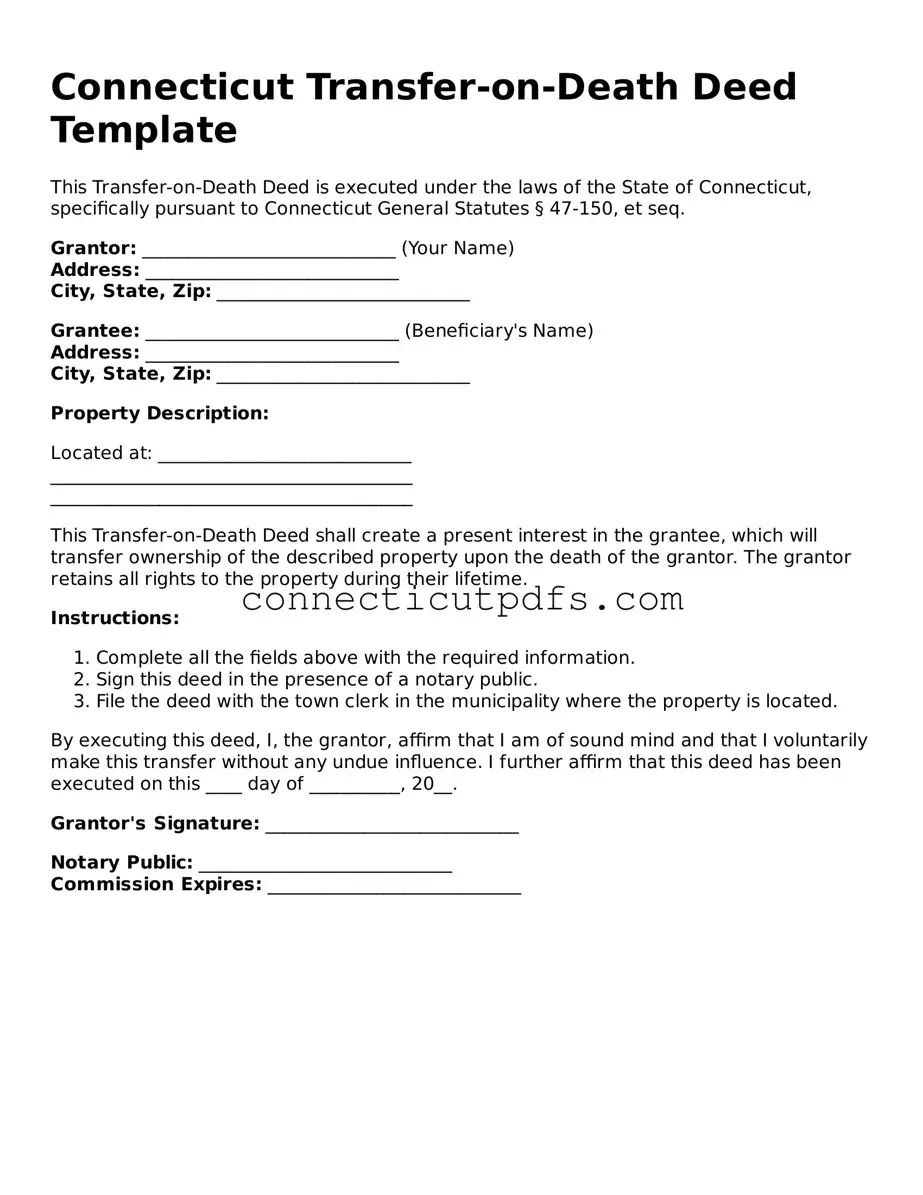What is a Transfer-on-Death Deed in Connecticut?
A Transfer-on-Death Deed (TOD Deed) in Connecticut allows an individual to transfer real property to a designated beneficiary upon the individual's death. This deed does not require the beneficiary to take any action during the property owner's lifetime. The property is transferred automatically upon death, avoiding the probate process.
Who can create a Transfer-on-Death Deed?
Any individual who is the sole owner of real property or who holds property as a joint tenant can create a Transfer-on-Death Deed. It is important that the person creating the deed is of sound mind and legal age to make such decisions.
How do I complete a Transfer-on-Death Deed?
To complete a Transfer-on-Death Deed, the property owner must fill out the form with the necessary information, including the property description and the name of the beneficiary. The deed must be signed by the owner and acknowledged before a notary public. It is also advisable to check local regulations to ensure compliance.
Is there a specific format for the Transfer-on-Death Deed?
Yes, Connecticut law requires that the Transfer-on-Death Deed be in writing and include specific language that clearly indicates the intent to transfer property upon death. The form must also be properly executed and recorded in the town clerk's office where the property is located.
Do I need to notify the beneficiary when I create a Transfer-on-Death Deed?
While it is not legally required to notify the beneficiary, it is advisable to do so. Informing the beneficiary can help avoid confusion or disputes later on. It also allows the beneficiary to understand their rights and responsibilities regarding the property.
Can I revoke or change a Transfer-on-Death Deed?
Yes, a Transfer-on-Death Deed can be revoked or changed at any time during the property owner's lifetime. This can be done by executing a new deed that explicitly revokes the previous one or by creating a new deed with different terms. The revocation must also be recorded in the town clerk's office.
What happens if the beneficiary dies before the property owner?
If the designated beneficiary dies before the property owner, the Transfer-on-Death Deed becomes void for that beneficiary. The property owner can then designate a new beneficiary or allow the property to pass according to their will or state intestacy laws if no will exists.
Are there any tax implications associated with a Transfer-on-Death Deed?
Generally, there are no immediate tax implications when creating a Transfer-on-Death Deed. However, the property may be subject to estate taxes upon the owner's death, depending on the total value of the estate. Beneficiaries should consult a tax professional to understand potential tax consequences.
